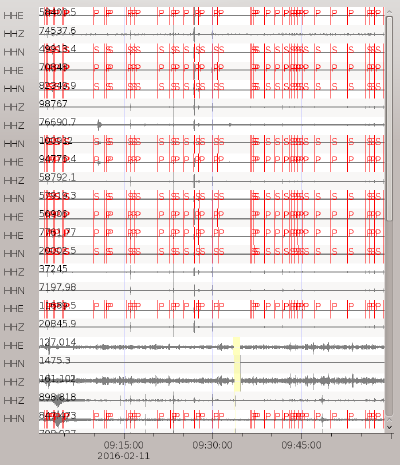ccloc
Cross-correlation detector
Overview
What is ccloc?
Signal detection by template matching
Ultra-low threshold seismicity monitoring

ccloc detects small-amplitude signals by template matching.
ccloc detects large but also very weak or distant earthquakes and other seismic events such as blast or glacial events by matching waveform templates from known master events to real-time or archived data. The matching is done by cross-correlation of processed data. The data processing includes any filter available in SeisComP. Such filtered waveforms and even envelopes or STA/LTA traces can be used as characteristic functions. ccloc does not require discrete picks. Therefore, the sensitivity of a monitoring network can be increased and the magnitude threshold can be lowered.
Event type classification
As ccloc can remember the event type of master events new detections may be classified and events of different types, e.g., earthquakes and explosions can be discriminated.
High performance, fast processing
ccloc has been optimized for efficient processing of large datasets and simultaneous application of many template events. Parallel computation on multiple threads or capable graphics cards (GPU) with CUDA support allow a very fast data processing in real time or in playbacks of past data.
Applications
Apply ccloc in a wide range of applications from monitoring micro-seismicity to discriminating nuclear explosions:
- Monitoring of regions with high-rate natural seismicity, e.g., earthquake swarms,
- Monitoring of micro-seismicity,
- Monitoring of induced seismicity, e.g., at geothermal power plants, in mines or near oil and gas production wells,
- Monitoring of nuclear explosions,
- Discrimination of earthquakes from other seismic sources such as explosions.
